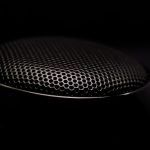Universal History Archive/Universal Images Group via Getty Images
- Filming is underway for “Masters of the Air,” a follow-up to WWII miniseries “Band of Brothers” and “The Pacific.”
- The show, which chronicles the US’s bombing campaign against Nazi-occupied Europe, has transformed parts of England.
- Photos and videos shared on social media by the cast and onlookers reveal how the show is going back in time.
Apple TV+ is not ready to share details about “Masters of the Air,” the highly anticipated follow-up to World War II miniseries “Band of Brothers” and “The Pacific,” but behind-the-scenes clues from people involved in production and from unaffiliated onlookers show it coming to life in England.
The show is based on Donald L. Miller’s “Masters of the Air: America’s Bomber Boys Who Fought the Air War Against Nazi Germany.” The adaptation comes 20 years after “Band of Brothers” and a decade after “The Pacific,” both of which raked in Emmy’s and were among some of the most expensive series ever produced.
Set in the final year of World War II, this installment chronicles the lives of airmen with the 100th Bomb Group, then part of the US Army Air Force’s Eighth Air Force, and their daylight strategic bombing campaigns against Hitler’s Fortress Europe.
ullstein bild/ullstein bild via Getty Images
It’s clear “Masters of the Air” — backed by executive producer Tom Hanks’ Playtone and executive producer Steven Spielberg’s Amblin Television — is investing heavily in bringing the Mighty Eighth Air Force’s aerial-warfare experience to television.
After HBO passed on the series because of the expense, said to be an estimated $250 million, Apple signed on, ordering nine episodes and making it the first series Apple will own in-house, according to The Hollywood Reporter.
While Apple remains mum on the series’ particulars — the company told Insider in September that it’s not yet doing press for the show or revealing a release date — there are some colorful clues emerging from people with firsthand knowledge and pictures from the sets.
Sneak peeks of the production have popped up on the Instagram of series director Cary Fukunaga, as well as on Masters Of The Air Behind The Scenes, an unofficial Facebook, Instagram, and Twitter community created and moderated by Simon Cooper, an enthusiast in England with no formal affiliation to the series.
Here are some snapshots of what to expect:
The war in the sky
Photo by Anthony Potter Collection/Getty Images
Seventy-five years after the end of WWII, there are just 10 airworthy B-17s — the iconic four-engine Boeing bombers that the US churned out en masse to help win the war.
While MotA doesn’t appear to be using any of these, the series does appear to have at least two full-scale B-17s models, along with a soundstage of deconstructed components like ball turrets and cockpits where typical 10-man crews would be positioned.
An onlooker snapped photos of this curious scene: A WWII bomber fuselage at a modern-day fuel pump in England.
—Masters Of The Air Behind The Scenes (@MastersBehind) October 16, 2021
It’s the semi-truck, not the B-17, that’s fueling up — luckily, because a B-17 takes 1,700 gallons. The B-17 replica strapped to its bed is stationary.
“It’s not everyday a B-17 pulls into a service station,” Cooper wrote when sharing the photo on Facebook.
Two full-size B-17 models were assembled and parked at Abingdon in Oxfordshire, England, where a WWII airfield set was built for the series.
Photo courtesy of Ceri Thomas
England-based history enthusiast Ceri Thomas saw online that filming for MotA was underway at the former RAF base at Abingdon, which had been transformed to look like the 100th Bomb Group’s base, Thorpe Abbotts, one of the dozens of US Eighth Air Force bases that were located across England.
Thomas drove there on September 19, and, through a gap in a hedge, spotted the replica B-17s and control tower.
Photo courtesy of Ceri Thomas
The markings on the B-17 replicas have been changing. The specific painted-on letters, numbers, and nose art offer hints about the storyline.
Each paint job represents a different bomber and crew from the 100th Bomb Group. Markings for at least nine different bombers have been spotted on set, so we can likely expect to meet different crews throughout the show.
WWII and aviation buffs alike (along with MotA writer and co-executive producer John Orloff) have been chiming in on the various sets’ impressive attention to detail and historical authenticity.
The B-17 replicas don’t move on their own. A construction crane and rigging lifts each bomber above the runway to simulate takeoffs and landings.
Photo courtesy of Paul King
From the edge of the former RAF base, onlooker Paul King captured how MotA appears to be getting these stationary bombers to “fly.”
Photo courtesy of Paul King
From what he saw, a construction crane is fully extended over the runway with rigging that lifts the replica skyward. It was a busy scene on the ground as “loads of vehicles” moved around the set below the suspended replica, King said.
As the photo circulated on social media, one fan joked: “‘Hanging’ your models takes on a new meaning when Apple TV and Masters of the Air get involved.”
Others noticed the propellers were removed from the replica, speculating that computer-generated imagery will be used to add them in for simulated takeoffs and landings.
—John Orloff (@johnorloff) January 18, 2022
In a warehouse turned soundstage, a deconstructed B-17 is used to film scenes in the sky.
In a series of Instagram Stories now posted to his “MoTA” highlight reel, director Cary Fukunaga offered a peek inside a sprawling soundstage in Aylesbury. The space used to be a warehouse, and Fukunaga posted that it still smells like one.
Inside are the deconstructed components of a B-17 used to simulate missions. Fukunaga’s Instagram Stories highlight a fuselage, ball turret, wheel well, and flight deck hanging from scaffolding-like rigging.
Bettmann/Getty Images
Fukunaga shows “the volume” where the filming actually happens. Its curved walls cover three-quarters of a circle and appear to be a very fancy green screen. In the center of the volume is a B-17 cockpit rigged in the air.
Actor Barry Keoghan’s November social media posts from the MotA set offer a glimpse of the technology being used. In a cockpit selfie, 3D clouds appear behind him. A similar post showing the computer-generated clouds from the cockpit window appeared on Fukunaga’s Instagram Stories.
Photos from set appear to show actor Fionn O’Shea outfitted for a WWII bombing mission. Fukunaga also posted several Instagram Stories (now posted to “MoTA” Highlights reel) of O’Shea brushing up on his skateboarding skills while sporting a heated “bunny suit” and sheepskin coveralls.
Central Press/Hulton Archive/Getty Images
Bomber boys commonly wore “blue bunny” suits under sheepskins to keep warm enough in the -50 degree conditions they might experience on missions.
In Fukunaga’s Instagram Stories, there’s a cord hanging from O’Shea’s left side, like the real-life ones that plugged into the bomber to heat electric coils sewn into airmen’s suits.
In another video posted on Fukunaga’s Instagram, O’Shea appears to be wearing sheepskin-lined leather flying pants and a jacket over the blue bunny suit.
Sending England back in time
Hulton-Deutsch Collection/CORBIS/Corbis via Getty Images
Masters of the Air has been spotted shooting throughout England over the past year and appears to be sparing no expense to recreate the wartime environment, from the blare and chaos of bombing raid sirens to the look of the pubs and towns that airmen visited between missions.
Cooper, founder of the unaffiliated fan group Masters Of The Air Behind The Scenes, has helped aggregate some photos and tips.
The show appears to be giving a WWII-era facelift to storefronts in Hemel Hempstead’s Old Town. Present-day Lucky Tattoo & Piercing was seemingly transformed into an air-raid shelter.
Photo courtesy of Lloyd Dickinson
Photos show sets built to look like bombed-out streets — presumably showing damage from German bombing campaign against Britain.
The show’s attention to detail can also be seen in images of wartime newspaper headlines, along with bicycles like the ones airmen and civilians relied on to get around, especially amid wartime fuel shortages.
Bert Hardy/Picture Post/Hulton Archive/Getty Images
MotA also appears to be transforming parts of the English countryside into Third Reich territory, likely in part to recreate experiences of Allied airmen who were on the run or became prisoners of war.
Lloyd Dickinson, who lives a short walk from the RAF Bovingdon runway, has shared pictures of a set that appears to be a prisoner-of-war camp built next to a real modern-day prison.
Photo courtesy of Lloyd Dickinson
The camp is likely a replica of Stalag Luft 3, located in what is now Zagan, Poland, where captured Allied airmen were held until the Soviets liberated them in January 1945.
Photo courtesy of Lloyd Dickinson
Katie Sanders is a writer based in New York City. Her reporting has brought her to prisons, JDate, the CIA, and the White House. Follow her at @katiessanders.
Mara Storey is a people analytics manager at Deloitte and WWII enthusiast based in Nashville.
Powered by WPeMatico






